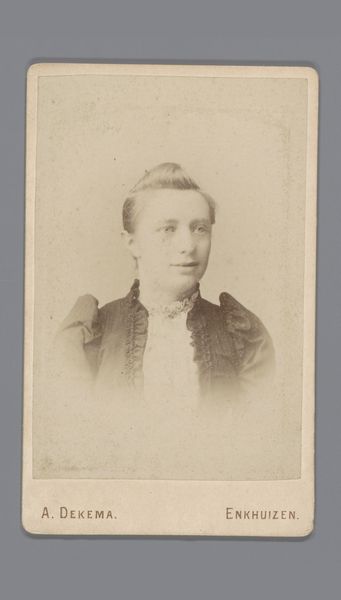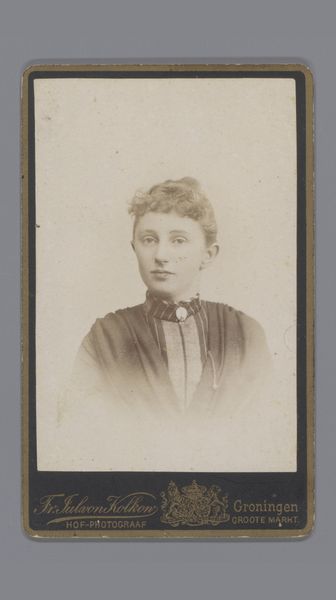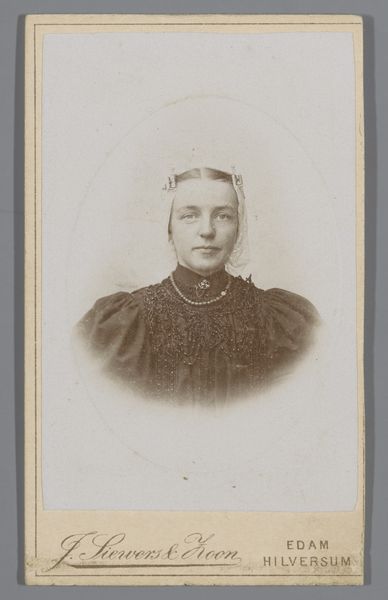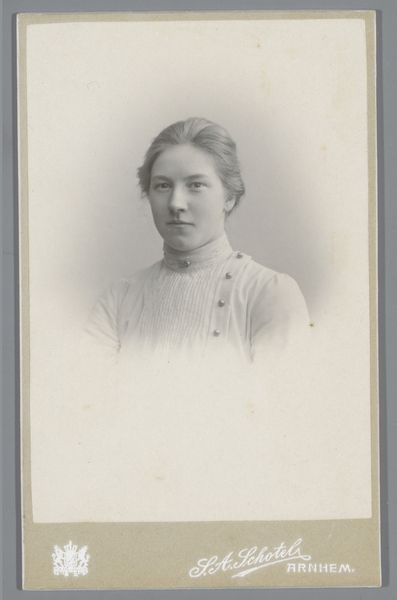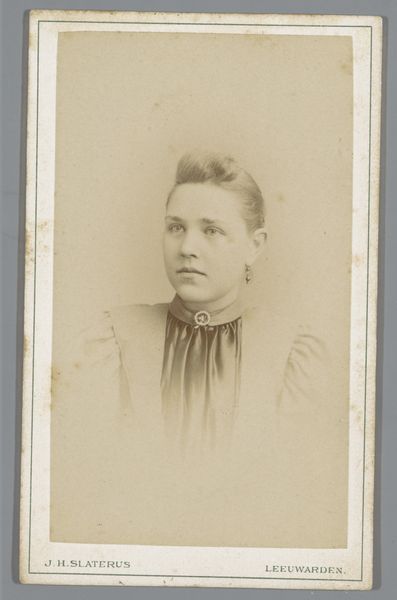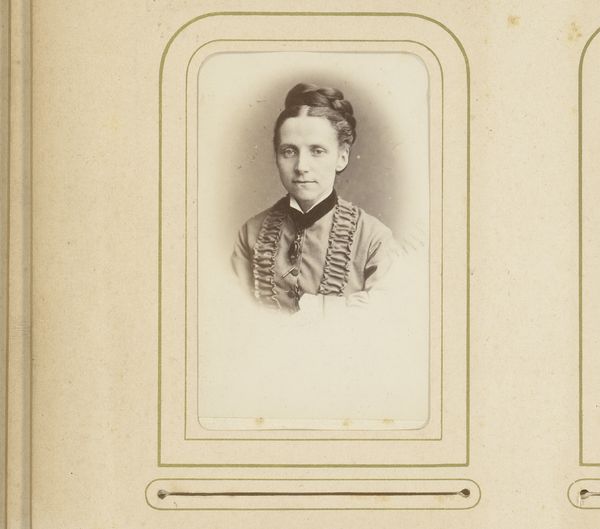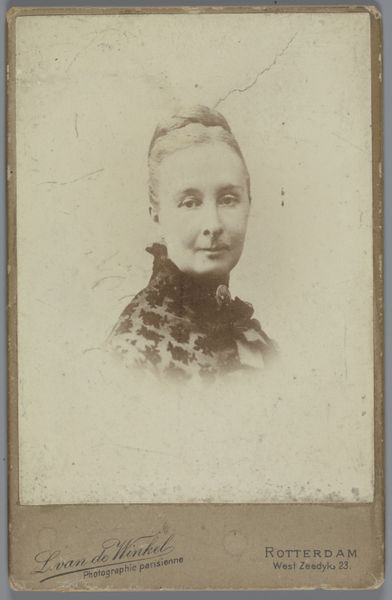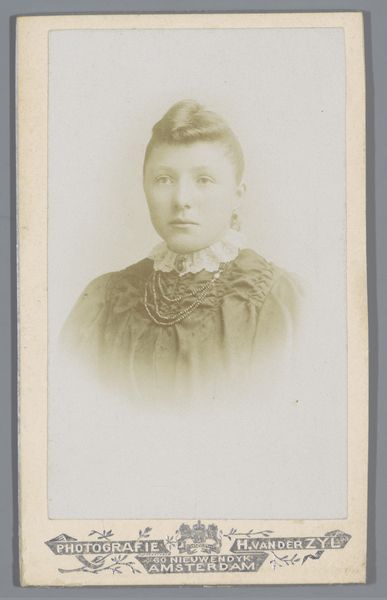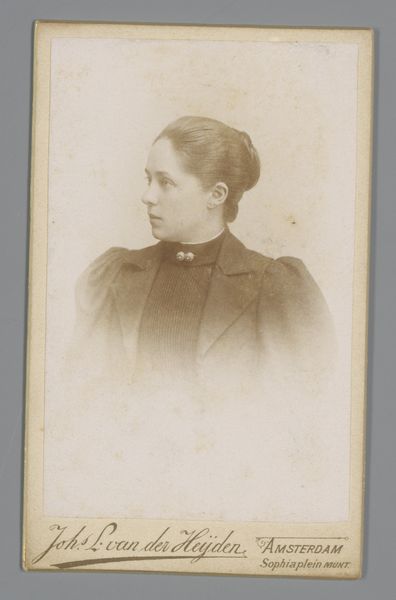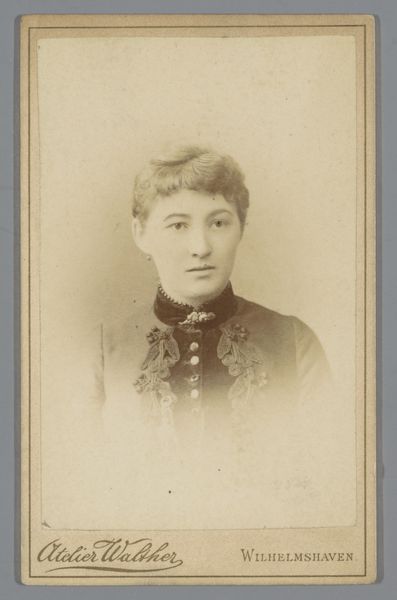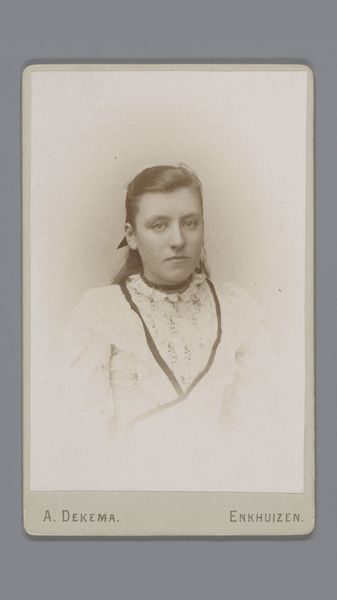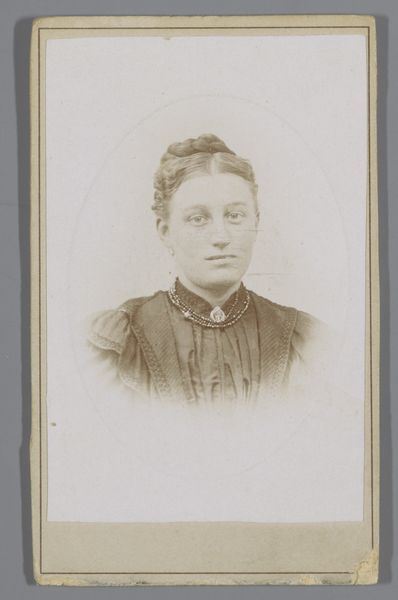
photography
#
portrait
#
aged paper
#
photo restoration
#
light coloured
#
photography
#
framed image
#
realism
Dimensions: height 105 mm, width 64 mm
Copyright: Rijks Museum: Open Domain
Curator: Friedrich Julius von Kolkow gifted us this photographic portrait, "Portret van Trui Dijkema," which spans from 1884 to 1896. It resides here at the Rijksmuseum, offering a glimpse into a life and time. What strikes you most immediately about it? Editor: The sepia tone lends a palpable sense of age, doesn’t it? I am curious to know about the photographic process that delivered this. There’s something intrinsically captivating about historical portraits. Curator: Absolutely. Given the period, photography was democratizing representation, shifting power dynamics around portraiture away from elite painted commissions. Think of the implications for women accessing image-making. Editor: Precisely. We see a delicate framing—notice the texture of the paper itself, a product made through factory labor, made accessible, even ordinary, through the means of mechanical reproduction. This shift altered artistic conventions and possibilities. How did this challenge or change existing modes of image-making and distribution at the time? Curator: It undeniably shaped them. As photography became more prevalent, its inherent realism influenced painting toward impressionism and later movements. This piece, I find, beautifully encapsulates a particular cultural gaze and ideal of feminine presentation in that period. Editor: Agreed. The soft focus and composition make you feel close. A directness from both subject and maker is what’s happening. Yet, there is artifice and social commentary because making images relies upon an infrastructure. Who made this? Under what conditions? For what profit and for whose gain? These things affect its meanings and material value as much as artistic choice does. Curator: Indeed, those questions open new avenues for interpretation. Consider how photographic studios themselves operated, often employing women in retouching and printing roles. The photo becomes an artifact within a broader social, economic, and gendered network of labour. Editor: Viewing art, even this subdued, delicate portrait, in that multifaceted manner gives us so much more to explore than purely the subject herself, Trui Dijkema. Curator: Absolutely, focusing on material and context allows a much more expansive way of understanding art’s value. Editor: Exactly! So often we fixate on authorship or intention, when often meaning emerges through the interaction of artist, object, and audience.
Comments
No comments
Be the first to comment and join the conversation on the ultimate creative platform.
